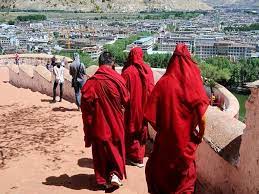BEIJING [China], Jan 7: China’s “forceful occupation of Tibet has had consequential effects on the centuries-old and revered indigenous culture of the Tibetan population,” Tibet Press reported.
China has maintained its territorial control over the Tibetan region and has tried to “sincize” the population that preaches the Tibetan culture since the invasion of Tibet. China’s global ambition is motivated by its “assertive characteristics” all around its regions where it projects itself as a dominant player, according to Tibet Press report. China has managed to spark discontent with the majority of its neighbours with border disputes, and sovereign claims over territories.
The report said that one of the most repressive of Chinese strategies lies in the “iron-fisted control of Tibet that has claimed the lives of thousands” of people. China’s claims over Tibet have strengthened over the years.
China’s legitimacy in Tibet is sourced from an “illegal Agreement on Measures for the Peaceful Liberation of Tibet” also known as the 17 Point Agreement signed on May 23, 1951, by a “person devoid of legitimate authority to represent Tibet,” Tibet Press reported.
According to the agreement, China had committed to keeping Tibet’s traditional government and religion in place without stopping the practices of local ethnic groups, as per the news report. Tibetan government in exile has claimed that the agreement was signed through “coercive means” and is devoid of any legal legitimacy.
In the past 80 years, China has undermined the agreement through which it derives its legitimacy. Chinese authorities have tried to “cleanse Tibetan culture” from the sacred lands by introducing “communist policies, enforcing regressive Sinicization measures and by forcefully assimilating its ethic population in Tibetan regions,” according to Tibet Press.
Furthermore, the Chinese Communist Party has been trying to declare a successor to the Dalai Lama for years. However, the efforts of Beijing have remained unsuccessful. The succession plans of the 14th Dalai Lama are an important part of China’s attempt of assimilating the Tibetan region into China.
Beijing’s aspirations have a consequential effect on China’s borders with India, more particularly in the Arunachal region, as per the news report. The Tawang district in Arunachal Pradesh has great cultural value for Buddhism and has been native to the oldest and second biggest monastery in Asia.
The Chinese Communist Party has strained upon the economic advancements made in Tibet. China’s desire to exploit Tibet’s rich resourceful ecology and mineral reserves has encouraged hegemonic tendencies that have become more apparent with its developmental model.
Infrastructural projects have been constructed particularly along the rich resourceful regions of Gyama, Shetongmon, and Nrbusa amongst many other important regions. The economic effect of China’s mineral exploitations in Tibet is valued at over USD 100 billion, according to Tibet Press report.
The ecological disaster caused by such activities is yet to gather attention mostly due to the inhumane treatment of the Tibetan population. China’s damage to Tibet’s culture and ecological balance needs a unified response. Beijing’s actions must be dealt with through an equal measure that restrains “China’s colonial and hegemonic aspirations.”
However, Beijing’s approach is driven by its quest to secure a superior position in the international order. The report further said that such aspirations if given space in the international forums, can result in an “infestation of far more regressive tactics in sensitive regions including Tibet.” (ANI)


